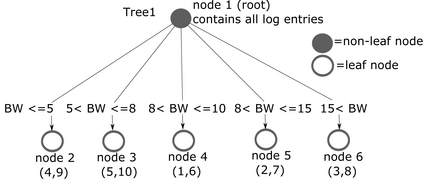The increase and rapid growth of data produced by scientific instruments, the Internet of Things (IoT), and social media is causing data transfer performance and resource consumption to garner much attention in the research community. The network infrastructure and end systems that enable this extensive data movement use a substantial amount of electricity, measured in terawatt-hours per year. Managing energy consumption within the core networking infrastructure is an active research area, but there is a limited amount of work on reducing power consumption at the end systems during active data transfers. This paper presents a novel two-phase dynamic throughput and energy optimization model that utilizes an offline decision-search-tree based clustering technique to encapsulate and categorize historical data transfer log information and an online search optimization algorithm to find the best application and kernel layer parameter combination to maximize the achieved data transfer throughput while minimizing the energy consumption. Our model also incorporates an ensemble method to reduce aleatoric uncertainty in finding optimal application and kernel layer parameters during the offline analysis phase. The experimental evaluation results show that our decision-tree based model outperforms the state-of-the-art solutions in this area by achieving 117% higher throughput on average and also consuming 19% less energy at the end systems during active data transfers.
翻译:科学工具、物联网(IoT)和社交媒体产生的数据的增加和迅速增长导致数据传输业绩和资源消耗,从而引起研究界的极大关注。网络基础设施和终端系统使这种广泛的数据流动能够使用每年以兆瓦时测量的大量电力。核心网络基础设施内部的能源消费管理是一个积极的研究领域,但在主动数据传输过程中,在终端系统减少电力消耗方面的工作量有限。本文件展示了一个新的两阶段动态动力输送和能源优化模式,它利用基于离线的决策搜索树群集技术来封存和分类历史数据传输记录信息,以及在线搜索优化算法,以寻找最佳应用和内核层参数组合,以最大限度地实现数据传输,同时尽量减少能源消耗。我们的模型还采用了一套共同方法,以减少在离线分析阶段寻找最佳应用和内核层参数方面的不稳性不确定性。实验性评价结果显示,我们基于决定的树木模型在封闭了本区域的状态-搜索树群集技术,以包罗和在线搜索优化算法,以寻找最佳应用和内核层参数组合,以找到最佳应用和内层参数组合,以尽量扩大数据传输,同时减少能源消耗量。在19%的能源平均期间实现117%的数据传输。






